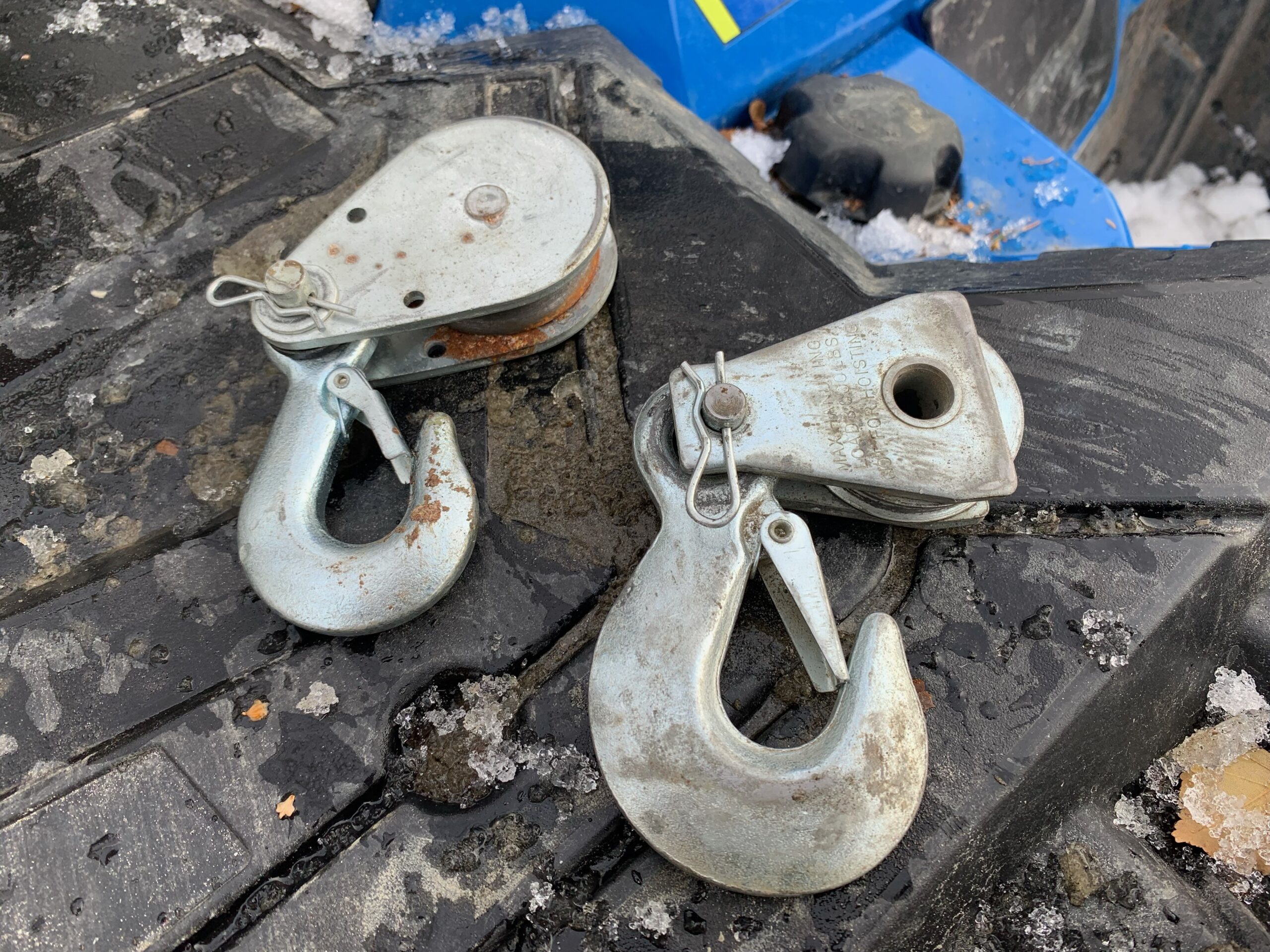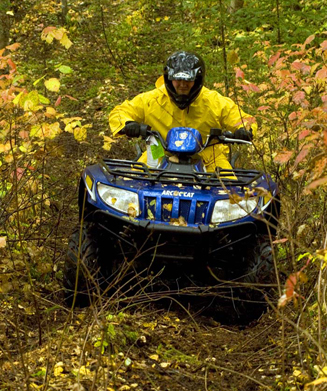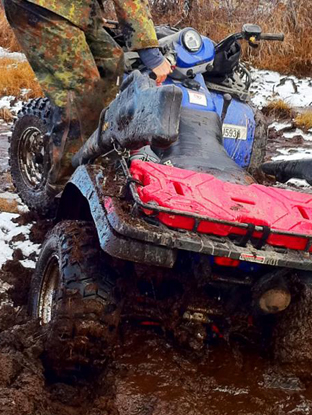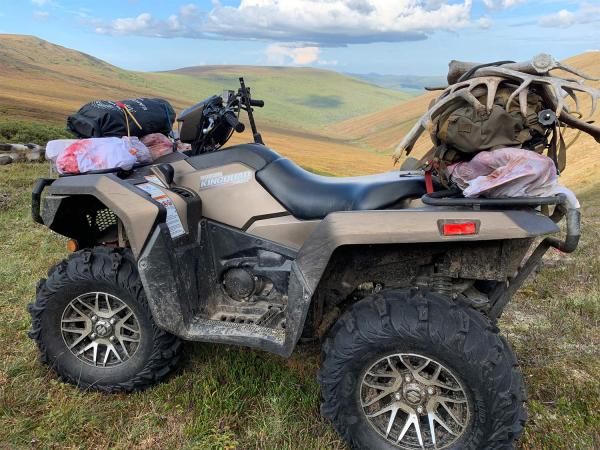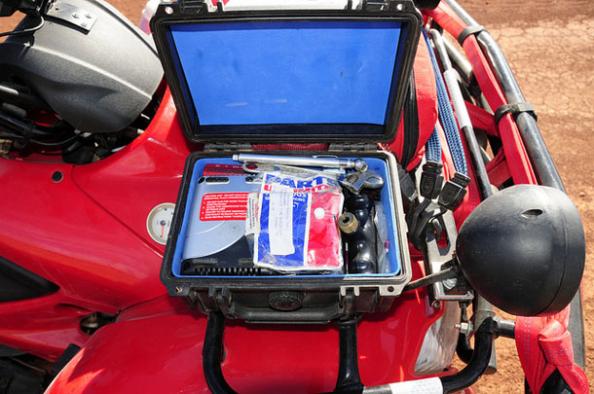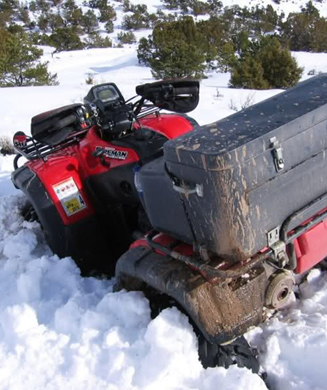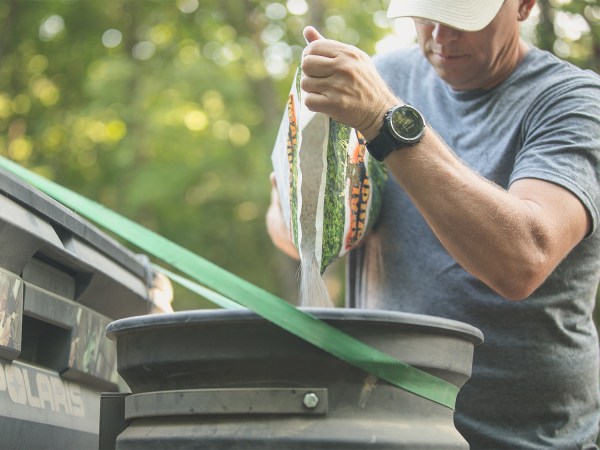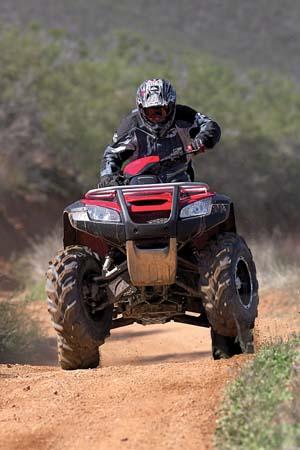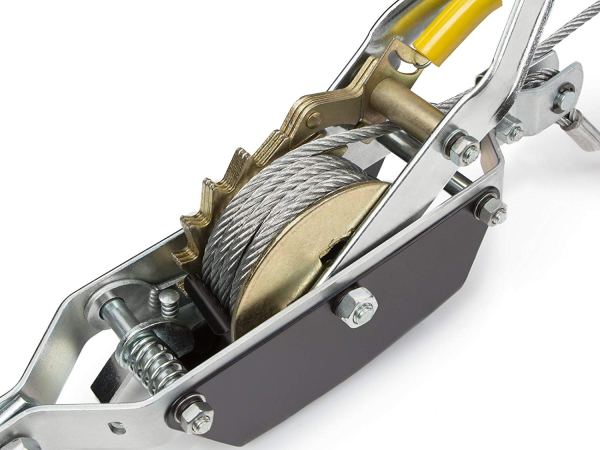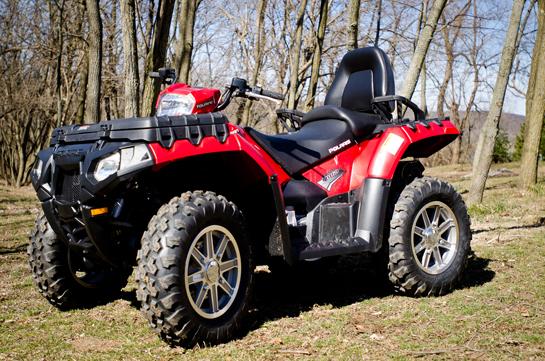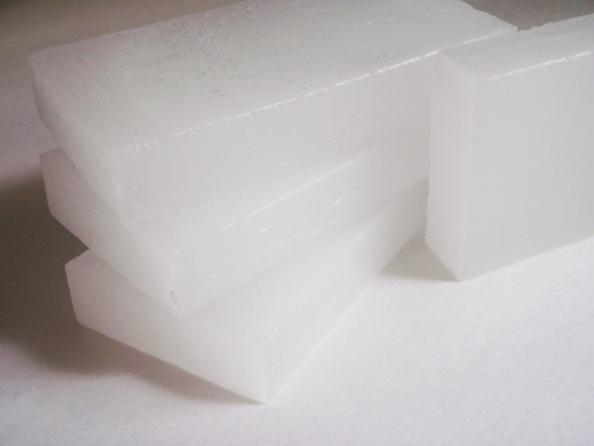We may earn revenue from the products available on this page and participate in affiliate programs. Learn More ›
Today’s ATVs and UTVs are tremendous machines. They are more powerful, nimble, and technologically advanced than ever before. But sometimes they still need a little help. I’ve covered plenty of valuable ATV aftermarket upgrades, parts, and accessories in the past. And if you own an ATV or UTV, you likely have a few essential items that never leave your rig. Most folks will have a flat tire repair kit and a small tool kit on board, but another incredibly valuable tool to have is a snatch block (or two).
A basic snatch block should have a simple pulley and a hook, which can be hooked onto an anchor point. In this case, the pulley should be used with your winch rope or cable. The pulley can pop apart and close back on the winch rope, so the rope runs through the pulley. A 2-ton (4,000-pound) rated snatch block is usually affordable, and small enough to fit in the tool storage compartments of many ATVs and UTVs. It’s a tool that might not always see regular use, but when you need it, you’ll be very glad to have it.
If you already have a winch on your ATV or UTV (and you should), you know how useful it is. A snatch block can maximize that usefulness in two major ways.
Snatch Blocks Increase Pulling Power
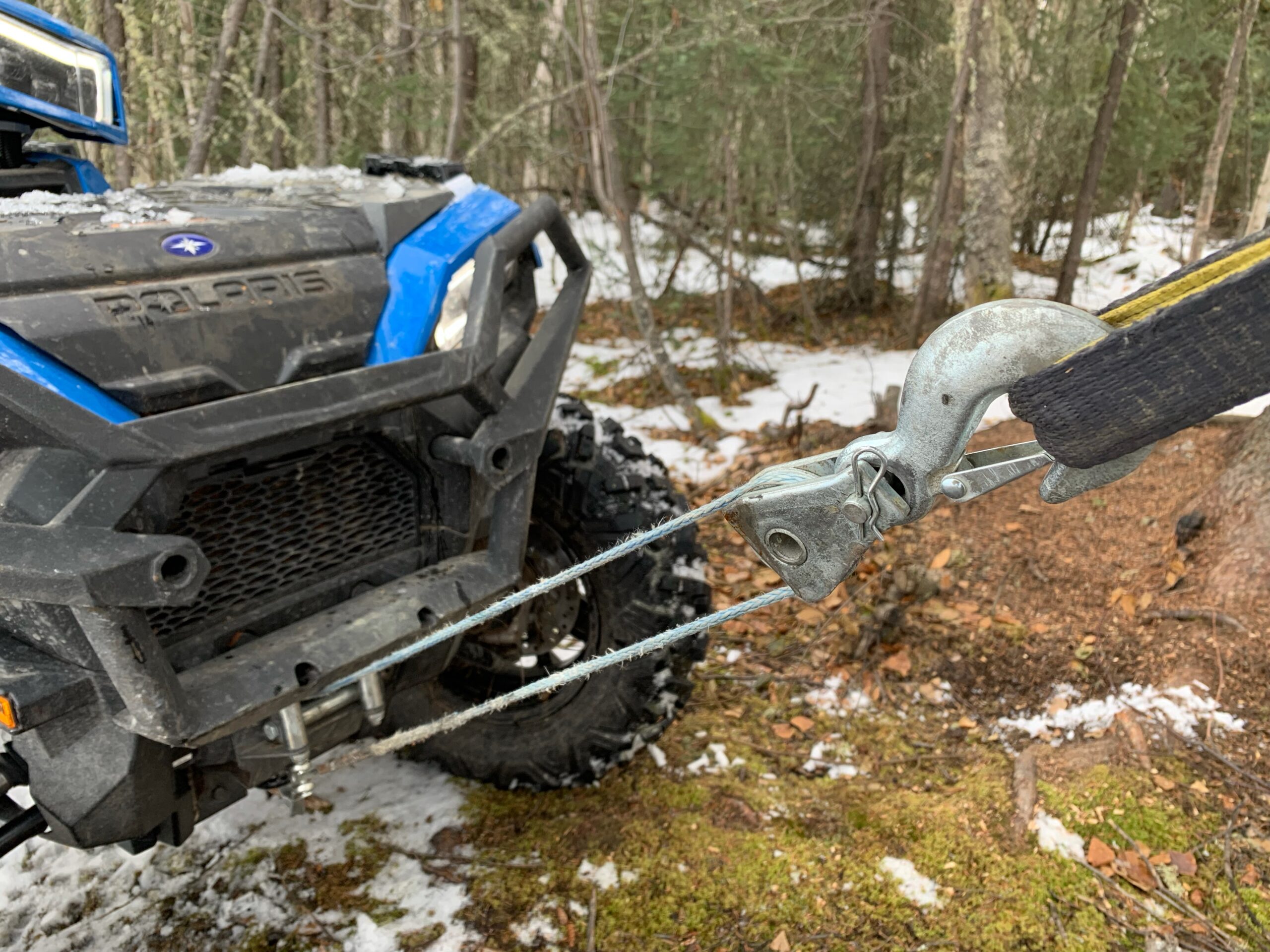
First, the pulley of the snatch block can be used to enhance the pulling power of your winch. You might be stuck in a mud hole, or need to drag a big bull moose out of a pond. Either way, sometimes the direct pulling power of your winch just isn’t enough. And, if you run your winch too hard without proper rest cycles, you can risk damaging it.
Sometimes it’s handy to be able to double your pulling power, and a single snatch block can handle that. To do this, make sure you are close enough to run your winch out to the object you’re pulling on and back to the machine. For example: If you have 50 feet of rope or cable, you’ll want to be less than 25 feet away so you don’t spool your winch. Next, you’ll need some rope or a strap to loop around your anchor or the thing you’re trying to extract. This could be a tree, an elk or moose, a truck, or even another ATV or UTV.
Loop your winch rope or cable through the pulley, hook the snatch block to the anchor loops you just made, then snap your winch hook back onto a tow ring on your machine. Now, when you wind in your winch, it will pull you (or what you’re towing) at only half the speed, but double the force. If you are trying to pull another ATV out or move an object and it’s dragging you forward, you can sometimes use a tow-strap or rope to tie the rear of your machine off to a tree so that you can’t be pulled forward. In some cases, you can do damage to the frame or anchor points of your machine by doing this, so be careful. But also, desperate times call for desperate measures, and if it’s a matter of getting out of the mud and back home, you’ll have to do what needs to be done and make repairs later.
Read Next: 5 of the Best Aftermarket Tires for Your ATV
Redirect the Force of Your Winch
More often than not, you don’t need to double-over winch lines to obtain sufficient pulling force. Between the winch itself, and power applied with a little bit of throttle, you’ll have plenty of juice for most of your needs. However, many tasks can be aided simply by redirecting the force of your winch.
Typically, you will only be able to use your winch or a tow rope to pull in a direction that goes directly back to your machine. Not with a snatch block. If you need a more advantageous angle to pull from, you can simply use a strap or rope to hook the pulley onto a tree or some sort of anchor, run your winch rope through it, and attach to what you’re pulling. This won’t increase your pulling power, but having a better angle can often come in very handy.
While hanging moose meat in camp this year, we had a mishap with our pole, and the lashings began to slip. We had all the meat from the moose hanging, so rather than take it all down, we tied a snatch block above the sagging end of the meat pole, ran the winch rope through, and used it to lift that end of the pole straight up and secure it.
On a sturdy branch, you could easily lift an animal like a deer for skinning and dressing, or even another ATV or your own quad in lieu of a jack for fixing a tire or replacing an axle. If your need to extract yourself or a buddy, it can help give you an upward pulling angle to overcome an obstacle, rather than just pulling parallel with the ground.
Setting a snatch block up can take a bit of time, but you won’t regret having one or two in your tool kit. Their usefulness is only limited by your imagination.

